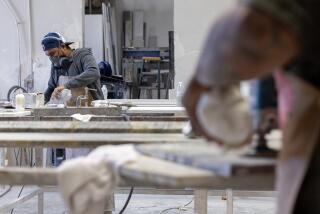Theme Park Safety Bill Gets Off to Bumpy Start
- Share via
WASHINGTON — When a child dies in a plane crash or a train wreck, federal authorities rush to the scene to investigate. But when 5-year-old David Fackler’s foot was crushed on the Big Thunder Mountain ride at Disneyland in 1998, there was no federal safety review.
A bill that came before a House panel Tuesday would change that by empowering the U.S. Consumer Product Safety Commission to set safety standards, conduct inspections and investigate injuries and deaths at amusement parks. The commission would also have the power to fine owners for violations.
But the measure, introduced after a spate of accidents on amusement park rides in California and elsewhere in recent years, faces an uncertain future after its first hearing.
Rep. Cliff Stearns (R-Fla.), a committee member, called the bill “a solution in search of a problem.”
“There are more people injured while bowling,” when compared proportionally to the number of visitors to amusement parks, he said. “Would we advocate giving the Consumer Product Safety Commission authority to regulate bowling balls?”
He asserted that state oversight and industry self-regulation have made amusement parks “one of the safest forms of entertainment.”
Strongly disagreeing was the bill’s author, Rep. Edward J. Markey (D-Mass.), who said the legislation is needed to deal with a rising number of accidents on roller coasters.
According to federal estimates, there were 4,500 emergency room visits in 1998 resulting from injuries at amusement parks, up from 2,400 in 1994. Six deaths were reported in 1999, including that of a 12-year-old who fell 129 feet from the Drop Zone Stunt Tower ride at Paramount’s Great America in Santa Clara, Calif.
An industry official, however, questioned the accuracy of the federal estimates and called the bill unnecessary.
John R. Graff, president and chief executive officer of the International Assn. of Amusement Parks and Attractions, a Virginia-based trade group, said that fewer people are injured on park rides than are hurt while fishing.
He told the House Commerce subcommittee on telecommunications, trade and consumer affairs that in an average year, accidents at amusement parks account for two deaths and 36 injuries serious enough to require overnight hospitalization.
He noted that all but eight states regulate amusement parks. California last year passed legislation creating state inspections for theme parks after a Disneyland visitor in 1998 was hit and killed by a metal cleat that broke loose from the Columbia sailing ship ride.
But Ann Brown, chairwoman of the Consumer Product Safety Commission, called the state laws a “patchwork of inconsistent regulations.”
The commission oversees the safety of traveling carnival rides, but its oversight of fixed amusement park rides was taken away by Congress in 1981. Brown said that, as a result, the amount of consumer protection a rider receives depends on an “irrelevant factor--whether it is a fixed-site or mobile ride.” It was Markey who drew comparisons between plane crashes and train wrecks, which are investigated by federal authorities, and amusement park accidents, which are not.
“No one questions the federal role in overseeing the safety of trains or buses or planes,” Markey said, but when it comes to amusement parks, “we are confronted with a special exemption from any federal oversight.”
Among those speaking in support of Markey’s measure was David Fackler’s mother, Kathy Fackler, whose lobbying in Sacramento last year helped spur passage of the California law.
More to Read
Inside the business of entertainment
The Wide Shot brings you news, analysis and insights on everything from streaming wars to production — and what it all means for the future.
You may occasionally receive promotional content from the Los Angeles Times.











